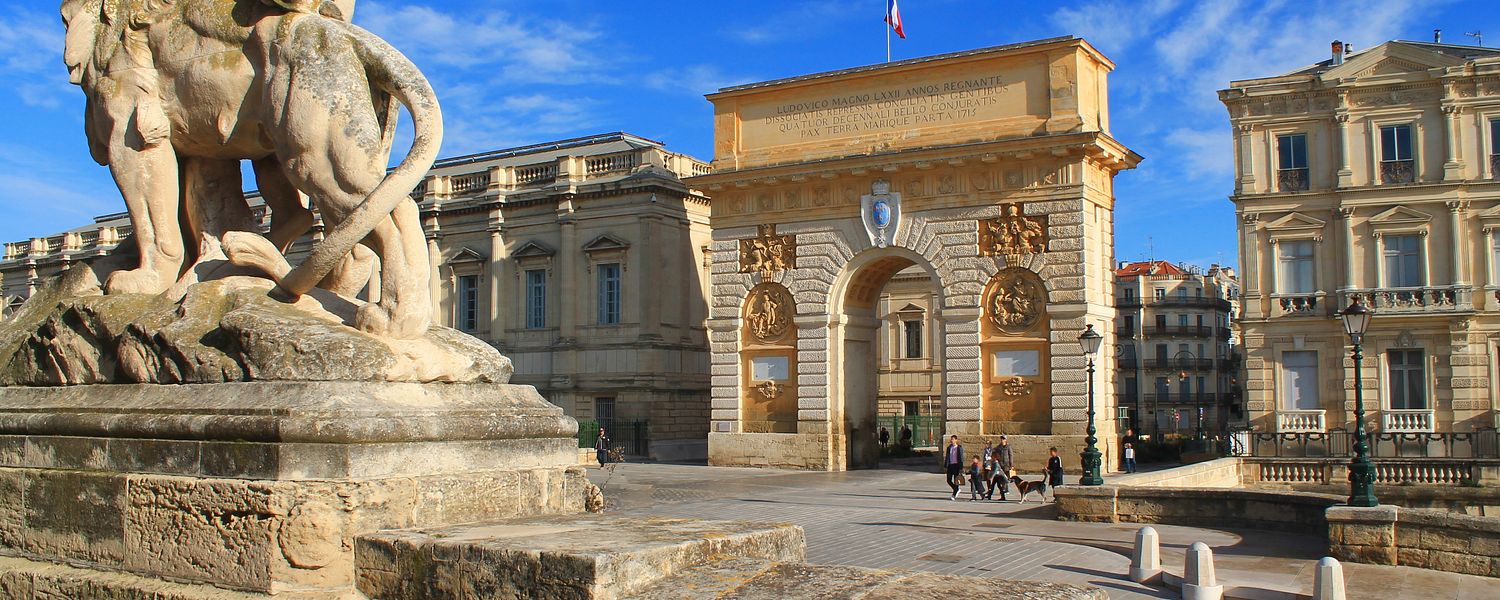
Provided by:
Picturereflex/Shutterstock

Our travel guides are free to read and explore online. If you want to get your own copy, the full travel guide for this destination is available to you offline* to bring along anywhere or print for your trip.
*this will be downloaded as a PDF.Price
€4,95
The City
The guide was updated:
Montpellier — originally called Monte Pestalario — is one of only a few larger cities in southern France that does not have Roman roots. The city was founded in 985 under a local feudal dynasty, the Guilhem, who combined two hamlets and built a castle and walls around the united settlement.
During the Middle Ages, Montpellier evolved into a prominent medieval trading hub and a centre of intellectual and cultural pursuits. Its renowned University of Montpellier, established in 1220, holds the distinction of being one of the oldest continuously operating universities in the world. Its roster of famous alumni includes the creator of prophecies, Nostradamus, and the author Rabelais.
Over the next centuries, the open-minded and liberal Montpellier was faced with several challenges. It was struck by the plague in the 1300s, and later became a stronghold for the French Protestants, the Huguenots. Until the revocation of the Edict of Nantes in 1685, they fought a losing battle against the Catholic Church and the French crown. By the time these religious wars ended, all surviving Huguenots had either surrendered or fled to England, Ireland or America.
Today, Montpellier is known for its university and a quarter of its citizens are students. The beautiful medieval area is a pedestrian haven with marbled alleys like L’Ancien Courrier. Low-set medieval buildings and churches adorn the area’s 16 squares, including the one in the city centre, Place de la Comédie.
During the Middle Ages, Montpellier evolved into a prominent medieval trading hub and a centre of intellectual and cultural pursuits. Its renowned University of Montpellier, established in 1220, holds the distinction of being one of the oldest continuously operating universities in the world. Its roster of famous alumni includes the creator of prophecies, Nostradamus, and the author Rabelais.
Over the next centuries, the open-minded and liberal Montpellier was faced with several challenges. It was struck by the plague in the 1300s, and later became a stronghold for the French Protestants, the Huguenots. Until the revocation of the Edict of Nantes in 1685, they fought a losing battle against the Catholic Church and the French crown. By the time these religious wars ended, all surviving Huguenots had either surrendered or fled to England, Ireland or America.
Today, Montpellier is known for its university and a quarter of its citizens are students. The beautiful medieval area is a pedestrian haven with marbled alleys like L’Ancien Courrier. Low-set medieval buildings and churches adorn the area’s 16 squares, including the one in the city centre, Place de la Comédie.


